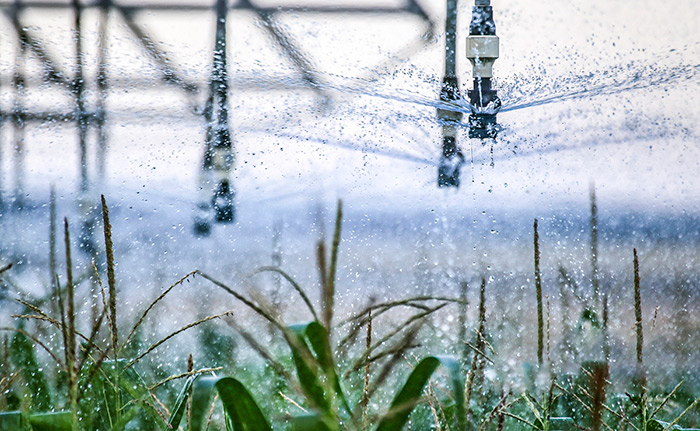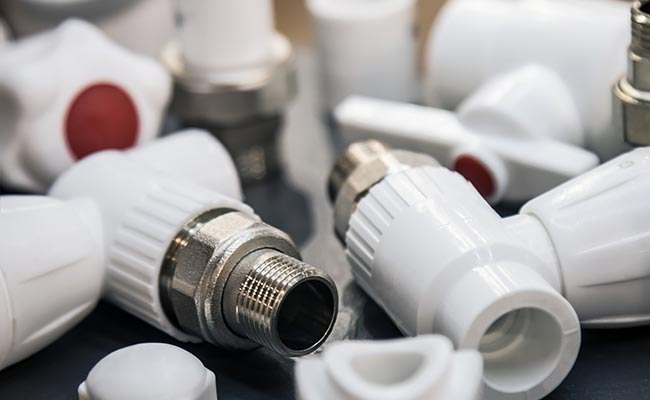
Upgraden naar eenPPR compacte kogelkraan met wartelTransformeert watersystemen. Het duurzame ontwerp is bestand tegen slijtage. Een efficiënte waterstroom verlaagt de energiekosten. De installatie is snel en probleemloos. Of het nu voor thuisgebruik of commercieel gebruik is, deze klep biedt betrouwbaarheid en prestaties. Het is de moderne oplossing voor beter sanitair.
Belangrijkste punten
- Verbeter uw leidingwerk met de compacte PPR-kogelkraan. Deze is sterk en gaat meer dan 50 jaar mee, dus u hoeft hem niet vaak te vervangen.
- Het installeren en repareren is eenvoudig en snel. Het kleine en lichte ontwerp maakt het gemakkelijk te gebruiken voor zowel experts als beginners.
- Bespaar energiekosten met een betere waterstroom. Het slimme ontwerp van de klep vermindert het drukverlies, wat energie bespaart, zowel thuis als op het werk.
Wat maakt PPR Compact Union kogelkranen uniek?
Eigenschappen van PP-R-materiaal
De compacte PPR-kogelkraan onderscheidt zich door zijn materiaal: polypropyleen random copolymeer (PP-R). Dit geavanceerde materiaal biedt uitzonderlijke duurzaamheid en betrouwbaarheid, waardoor het ideaal is voor moderne watersystemen. In tegenstelling tot traditionele materialen is PP-R bestand tegen corrosie, kalkaanslag en chemische aantasting, wat zorgt voor een schone en niet-verontreinigde watervoorziening.
PP-R blinkt ook uit in thermische isolatie. Het is bestand tegen temperaturen tot 95 °C zonder zijn integriteit te verliezen, waardoor het geschikt is voor zowel warm- als koudwatersystemen. De niet-giftige aard garandeert veilig gebruik in drinkwatertoepassingen, wat huiseigenaren en bedrijven gemoedsrust geeft.
Hier volgt een kort overzicht van de eigenschappen van het materiaal:
| Eigendom | Beschrijving |
|---|---|
| Duurzaamheid | Bestand tegen corrosie, kalkaanslag en chemische degradatie; levensduur tot 50 jaar |
| Thermische isolatie | Kan temperaturen tot 95°C weerstaan zonder aan integriteit in te boeten |
| Niet-toxisch | Reageert niet met water, waardoor een onbesmette watervoorziening wordt gegarandeerd |
Kenmerken van het compacte Union Ball Valve-ontwerp
Deontwerp van de PPR-compactUnion-kogelkraan maakt het een game-changer voor loodgietersystemen. De compacte constructie vereenvoudigt installatie en onderhoud, wat tijd en moeite bespaart. Union-kogelkranen kunnen eenvoudig worden losgekoppeld en opnieuw worden aangesloten, waardoor onderhoud mogelijk is zonder de pijpleidingstructuur te verstoren.
De lichtgewicht materialen die in de klep zijn gebruikt, vergroten de bruikbaarheid. Loodgieters en doe-het-zelvers waarderen het eenvoudige installatieproces, waarvoor geen ingewikkelde fittingen nodig zijn. Ook het onderhoud is probleemloos dankzij het eenvoudige ontwerp dat een eenvoudige bediening mogelijk maakt.
Belangrijke ontwerpkenmerken zijn:
- Kogelkranen kunnen eenvoudig worden losgekoppeld en opnieuw worden aangesloten, waardoor het onderhoud wordt vereenvoudigd.
- Lichtgewicht materialen zorgen voor moeiteloze verwerking en installatie.
- Dankzij de compacte constructie is een eenvoudige installatie zonder speciaal gereedschap mogelijk.
Dankzij deze eigenschappen is de PPR compacte kogelkraan een praktische keuze voor iedereen die zijn watersysteem wil upgraden.
Duurzaamheid en prestaties op lange termijn
Als het om loodgietersystemen gaat,duurzaamheid staat bij ons vooropDe compacte PPR-kogelkraan met wartel blinkt uit op dit gebied en biedt een ongeëvenaarde slijtvastheid. Het robuuste ontwerp en de hoogwaardige materialen garanderen langdurige prestaties, zelfs onder veeleisende omstandigheden. Laten we de belangrijkste factoren bekijken die bijdragen aan deze uitzonderlijke duurzaamheid.
Corrosie- en schilferweerstand
Corrosie en kalkaanslag zijn veelvoorkomende problemen in traditionele leidingsystemen. Na verloop van tijd kunnen ze leidingen verstoppen, de waterstroom verminderen en de efficiëntie van het systeem aantasten. De compacte PPR-kogelkraan met wartel maakt een einde aan deze problemen. Gemaakt van polypropyleen random copolymeer (PP-R) is de kraan bestand tegen chemische reacties die corrosie en kalkaanslag veroorzaken. Dit garandeert jarenlang een schone en efficiënte watervoorziening.
Versnelde verouderingstesten valideren de slijtvastheid van de klep. Deze testen stellen PPR-fittingen bloot aan extreme omstandigheden, zoals hoge temperaturen en chemische concentraties, en simuleren daarmee jarenlang gebruik in de praktijk. De resultaten spreken voor zich:
| Testtype | Voorwaarden | Resultaten |
|---|---|---|
| Langetermijn hydrostatische test | 1.000 uur bij 80°C, 1,6 MPa | <0,5% vervorming, geen zichtbare scheuren |
| Thermische cyclustest | 20°C ↔ 95°C, 500 cycli | Geen verbindingsbreuken, lineaire uitzetting binnen 0,2 mm/m |
Deze mate van weerstand maakt de klep een betrouwbare keuze voor zowel residentiële als commerciële toepassingen.
Hoge temperatuur- en druktolerantie
Loodgieterssystemen worden vaak blootgesteld aan extreme omstandigheden, met name bij verwarming en warm water. De compacte PPR-kogelkraan met wartel is ontworpen om deze uitdagingen het hoofd te bieden. Het PP-R-materiaal is bestand tegen temperaturen tot 95 °C en hoge druk zonder zijn integriteit te verliezen.
Hier zijn enkele hoogtepunten van de prestaties:
- Het wordt veel gebruikt in verwarmingssystemen en warmwatervoorziening.
- Het materiaal is zeer slijtvast en toch licht van gewicht.
- Het is zeer sterk, taai en slagvast.
- Vergeleken met traditionele leidingen is het energiebesparend en milieuvriendelijk.
Deze eigenschappen maken de klep tot een veelzijdige oplossing voor diverse loodgieterswerkzaamheden. Of het nu gaat om een boiler voor huishoudelijk gebruik of een commercieel verwarmingssysteem, deze klep levert consistente prestaties.
Verlengde levensduur
Duurzaamheid gaat niet alleen over het weerstaan van zware omstandigheden, maar ook over een lange levensduur. De compacte PPR-kogelkraan met wartel biedt een indrukwekkende levensduur van meer dan 50 jaar onder normale bedrijfsomstandigheden. Deze lange levensduur vermindert de noodzaak tot frequente vervanging, wat op de lange termijn tijd en geld bespaart.
Statistische gegevens benadrukken de langere levensduur van het materiaal in vergelijking met andere materialen:
| Leidingmateriaal | Geschatte levensduur |
|---|---|
| PPR | 50+ jaar |
| PEX | 50+ jaar |
| CPVC | 50+ jaar |
| Koper | 50+ jaar |
| Polybutyleen | 20-30 jaar |
Dankzij de lange levensduur is de PPR compacte kogelkraan een kosteneffectieve en betrouwbare keuze voor moderne leidingsystemen.
Verbeterde waterstroom-efficiëntie
Een efficiënte waterstroom is een cruciale factor in elk leidingsysteem. De PPR compacte kogelkraan blinkt uit op dit gebied en biedt innovatieve ontwerpkenmerken die de waterstroom optimaliseren, drukverlies verminderen en energie besparen. Laten we eens kijken hoe deze klep de waterstroomefficiëntie verbetert.
Geoptimaliseerd intern ontwerp
Het interne ontwerp van de compacte PPR-kogelkraan is ontworpen voor maximale efficiëntie. De gladde binnenoppervlakken verminderen de wrijving, waardoor het water sneller en vrijer stroomt. Dit ontwerp minimaliseert turbulentie en zorgt voor een constante waterdruk in het hele systeem.
Hier zijn enkele belangrijke ontwerpoptimalisaties:
- Nauwkeurige stroomregeling verbetert de waterregulatie.
- Naadloze verbindingen voorkomen kieren en verminderen drukverlies.
- Hoge corrosie- en kalkaanslagbestendigheid zorgt voor een langdurige efficiëntie.
Deze eigenschappen maken de klep een betrouwbare keuze voor zowel residentiële als commerciële toepassingen. Of het nu gaat om een huishoudelijk leidingsysteem of een industriële installatie, de klep zorgt voor een soepele en efficiënte waterstroom.
Verminderd drukverlies
Drukverlies kan de prestaties van een watersysteem aanzienlijk beïnvloeden. De PPR compacte kogelkraan met wartel pakt dit probleem aan met zijn geavanceerde ontwerp. De gladde binnenkant en naadloze verbindingen verminderen de weerstand en zorgen voor minimale drukval over de klep.
Een vergelijking van de verbeteringen in de doorstromingsefficiëntie onderstreept de effectiviteit ervan:
| Verbeteringstype | Percentage toename |
|---|---|
| Toename van de stroomsnelheid | 50% |
| Maximale stroomsnelheidstoename | Tot 200% |
| Drukverliesreductie | Minder |
Bovendien blijkt uit gegevens dat PPR-kleppen beter presteren dan traditionele materialen zoals staal bij het verminderen van de waterweerstand:
| Pijpmateriaal | Maximale overgangsdruk (bar) | Maximale rek (µε) | Rekvergelijking met staal |
|---|---|---|---|
| PPR | 13.20 | 1496,76 | >16 keer |
| Staal | ~13.20 | < 100 | N.v.t. |
| PPR | 14.43 | 1619.12 | >15 keer |
| Staal | ~15.10 | < 100 | N.v.t. |
Deze vermindering van het drukverlies verbetert niet alleen de systeemprestaties, maar draagt ook bij aan energiebesparing.
Energiebesparing in watersystemen
De energiezuinigheid van de PPR compacte kogelkraan met wartel is een andere opvallende eigenschap. Door een optimale waterstroom te behouden en drukverlies te verminderen, minimaliseert de klep de energie die nodig is om water door het systeem te pompen. Dit vertaalt zich op termijn in aanzienlijke energiebesparingen.
Hier ziet u hoe PPR-kleppen zich verhouden tot andere materialen wat betreft energie-efficiëntie:
| Parameter | PPR-klep | Messing klep | Gietijzeren klep |
|---|---|---|---|
| Drukverlies | 0,2-0,3 bar | 0,4-0,6 bar | 0,5-0,8 bar |
| Warmteverlies | 5-8% | 12-15% | 18-22% |
| Onderhoudsimpact | Verwaarloosbaar | Jaarlijkse toename van energieverlies | Halfjaarlijkse toename van energieverlies |
PPR-kleppen leveren ook specifieke energiebesparingen op in verschillende toepassingen:
- HVAC-systemen: 18-22% reductie in pompenergie.
- Zonneboilers: 25% betere warmtebehoud.
- Industriële proceslijnen: 15% lagere energiebehoefte van compressoren.
- Gemeentelijke waternetwerken: 10-12% minder energieverbruik in zuiveringsinstallaties.
Met een levensduur van 25-30 jaar besparen PPR-kleppen tot 60% meer energie tijdens de productie en het gebruik in vergelijking met metalen kleppen. Dit maakt ze een milieuvriendelijke en kosteneffectieve keuze voor moderne leidingsystemen.
Vereenvoudigde installatie en onderhoud

Lichtgewicht en compacte structuur
De PPR compacte kogelkraan met wartel is ontworpen met gebruiksgemak in gedachten. De lichtgewicht constructie, gemaakt van polypropyleen random copolymeer (PP-R), maakt de kraan eenvoudig te hanteren tijdens de installatie. Deze functie is vooral handig in krappe of lastige ruimtes waar de manoeuvreerbaarheid beperkt is. Het compacte ontwerp vermindert ook de fysieke belasting van installateurs, waardoor het een ideale keuze is voor zowel professionals als doe-het-zelvers. Of u nu een thuissysteem wilt upgraden of aan een commercieel project werkt, deze kraan zorgt voor een zorgeloze ervaring.
Unieverbinding voor eenvoudig gebruik
Uniek kenmerk van de PPR compacte kogelkraan is de aansluiting met een wartel. Deze aansluitingen maken een eenvoudige montage en demontage van de klep mogelijk zonder dat er speciaal gereedschap nodig is. Dit gebruiksvriendelijke ontwerp bespaart tijd en moeite, vooral tijdens onderhoud of systeemupgrades.
- De koppelingen zijn gemaakt van lichtgewicht PP-R-materiaal, waardoor ze eenvoudig te vervoeren en te hanteren zijn.
- Hun ontwerpvereenvoudigt het procesvan het aansluiten en loskoppelen van componenten.
- Het lagere gewicht minimaliseert de fysieke belasting, zelfs in lastige installatieomgevingen.
Dit doordachte ontwerp zorgt ervoor dat gebruikers hun loodgietersystemen met minimale inspanning kunnen beheren.
Minimale onderhoudsvereisten
Onderhoud is een fluitje van een cent met de PPR compacte kogelkraan. Dankzij de duurzame constructie heeft hij slechts een paar keer per jaar onderhoud nodig. Regelmatige controles zorgen ervoor dat het systeem soepel en efficiënt werkt. Hier is een eenvoudige onderhoudsroutine:
- Controleer de wartelmoeren en draai ze indien nodig vast om lekkages te voorkomen.
- Controleer de flensbouten en draai ze vast met het aangegeven koppel.
- Laat de klep minimaal drie keer van volledig open naar volledig gesloten draaien om ervoor te zorgen dat deze goed blijft werken.
Deze eenvoudige taken nemen weinig tijd in beslag en verlengen de levensduur van de klep. Met zo weinig onderhoud is deze klep een uitstekende keuze voor wie op zoek is naar een onderhoudsarme loodgietersoplossing.
Kosteneffectieve oplossing
Betaalbare initiële investering
De compacte PPR-kogelkraan met wartel biedt een betaalbare instap voor het upgraden van leidingsystemen. Het lichtgewicht ontwerp verlaagt de productiekosten, waardoor het een budgetvriendelijke optie is voor huiseigenaren en bedrijven. In tegenstelling tot metalen kleppen, die vaak een hoog prijskaartje hebben vanwege materiaal- en productiekosten, bieden PPR-kleppen eenkosteneffectief alternatiefzonder dat dit ten koste gaat van de kwaliteit.
Bovendien bespaart het eenvoudige installatieproces op arbeidskosten. Loodgieters kunnen de installatie snel uitvoeren en doe-het-zelvers kunnen er gemakkelijk mee overweg. Dit elimineert de noodzaak voor speciaal gereedschap of uitgebreide expertise, wat de initiële kosten verder verlaagt.
Langetermijnsparen
Investeren in een compacte PPR-kogelkraan loont op de lange termijn. De duurzaamheid en corrosiebestendigheid zorgen voor minder vervangingen en reparaties. Traditionele metalen kleppen, die gevoelig zijn voor roest en kalkaanslag, vereisen vaak frequent onderhoud. PPR-kleppen daarentegen behouden hun prestaties tientallen jaren, waardoor terugkerende kosten worden bespaard.
Energie-efficiëntie draagt ook bij aan besparingen op de lange termijn. De gladde binnenkant van de klep minimaliseert wrijving, waardoor er minder energie nodig is om water te pompen. Dit leidt op de lange termijn tot een aanzienlijke verlaging van de energierekening. Voor zowel residentiële als commerciële systemen lopen deze besparingen aanzienlijk op.
Vergelijking met traditionele kleppen
PPR-kleppen presteren op verschillende belangrijke gebieden beter dan traditionele ontwerpen:
- Corrosiebestendigheid:In tegenstelling tot metalen kleppen zijn PPR-kleppen bestand tegen roest en chemische reacties, waardoor ze langer meegaan.
- Stroomefficiëntie:Het gladde oppervlak van PPR vermindert de wrijving, verbetert de waterstroom en voorkomt sedimentatie.
- OnderhoudMetalen kleppen vereisen vaak meer onderhoud, terwijl PPR-kleppen weinig onderhoud vergen en betrouwbaar zijn.
Hoewel sommige merken zoals IFAN een iets hogere duurzaamheid bieden, bieden de PPR-kleppen van PNTEK een uitstekende balans tussen prestaties en betaalbaarheid. Ze leveren consistente resultaten onder hoge druk en wisselende temperaturen, waardoor ze een slimme keuze zijn voor moderne leidingsystemen.
Milieuvriendelijk en veilig
Niet-giftig materiaal voor drinkwater
PPR-kleppen geven prioriteit aan veiligheid, met name voor drinkwatersystemen. Deze kleppen zijn gemaakt van polypropyleen random copolymeer en bevatten geen schadelijke chemicaliën, wat zorgt voor schoon en veilig watertransport. In tegenstelling tot traditionele materialen laat PPR geen giftige stoffen in het water uitlogen, waardoor het ideaal is voor residentiële en commerciële toepassingen.
Certificeringen van internationale organisaties bevestigen de veiligheid ervan verder. Zo bevestigt NSF/ANSI 61 in de VS dat er geen schadelijke stoffen in drinkwater terechtkomen. Ook WRAS in het Verenigd Koninkrijk en KTW in Duitsland certificeren de geschiktheid van deze producten voor drinkwatersystemen. Hier is een kort overzicht van de certificeringen:
| Certificering | Beschrijving |
|---|---|
| NSF/ANSI 61 (VS) | Zorgt ervoor dat er geen schadelijke chemicaliën in het drinkwater terechtkomen. |
| WRAS (VK) | Bevestigt dat het materiaal geschikt is voor contact met drinkwater. |
| KTW (Duitsland) | Certificeert veilig gebruik in drinkwatersystemen. |
| REACH (EU) | Beperkt schadelijke chemicaliën in consumentenproducten. |
| RoHS | Beperkt zware metalen in elektrische en loodgieterscomponenten. |
Deze certificeringen onderstrepen de inzet voor gezondheid en veiligheid, waardoor PPR-kleppen een betrouwbare keuze zijn voor milieubewuste consumenten.
Duurzame productiepraktijken
Duurzaamheid staat centraal bij de productie van PPR-kleppen. Fabrikanten gebruiken milieuvriendelijke processen om afval en energieverbruik te minimaliseren. Recycling speelt een belangrijke rol bij het omzetten van gebruikte PPR-buizen in grondstoffen voor nieuwe producten. Deze aanpak bespaart grondstoffen en vermindert de impact op het milieu.
Levenscyclusanalyses (LCA's) optimaliseren productieprocessen verder. Door de ecologische voetafdruk van PPR-kleppen te analyseren, identificeren fabrikanten manieren om energieverbruik en emissies te verminderen. Onderzoek richt zich ook op het verbeteren van de efficiëntie tijdens de productie, zodat elke stap aansluit bij duurzame praktijken.
| Bewijstype | Beschrijving |
|---|---|
| Recycling | Transformeert gebruikte buizen tot grondstoffen voor nieuwe producten, waardoor afval wordt verminderd. |
| Levenscyclusanalyse | Identificeert kansen om processen te optimaliseren en de belasting van het milieu te verminderen. |
| Milieuvriendelijke productie | Bevordert energiezuinige en afvalverminderende praktijken. |
Met deze werkwijze dragen PPR-kleppen bij aan een groenere toekomst.
Bijdrage aan milieuvriendelijke loodgieterssystemen
PPR-kleppen zijn niet alleen veilig, ze ondersteunen ook actief milieuvriendelijke leidingsystemen. Hun gladde binnenoppervlak vermindert wrijving, waardoor er minder energie nodig is voor het pompen. Thermisch isolerende eigenschappen houden de watertemperatuur constant, waardoor het energieverbruik voor verwarming afneemt. Bovendien spaart het gebruik van gerecyclede materialen grondstoffen en minimaliseert het afval.
Studies tonen aan dat PPR-kleppen de uitstoot van broeikasgassen tijdens de productie helpen verminderen. Ze dragen ook bij aan certificeringen zoals LEED en BREEAM, waardoor de duurzaamheidsclassificatie van gebouwen wordt verbeterd. Dit is hoe ze het verschil maken:
| Soort voordeel | Beschrijving |
|---|---|
| Energiezuinige productie | Verlaagt het energieverbruik en de uitstoot van broeikasgassen tijdens de productie. |
| Gebruik van gerecyclede materialen | Bespaart hulpbronnen en vermindert afval. |
| Lage emissieproductie | Verbetert de luchtkwaliteit en verkleint de CO2-voetafdruk. |
| Thermische isolatie-eigenschappen | Vermindert het energieverbruik voor verwarming door de watertemperatuur te handhaven. |
| Verminderde pompenergie | Bespaart energie bij het watertransport door de wrijving te minimaliseren. |
| LEED-certificering | Draagt bij aan punten voor LEED-certificering dankzij duurzaamheid en energie-efficiëntie. |
| BREEAM-certificering | Ondersteunt duurzaamheidsdoelstellingen voor BREEAM-certificering en verbetert de gebouwbeoordelingen. |
Door deze kleppen in leidingsystemen te integreren, profiteren gebruikers van zowel milieuvoordelen als besparingen op de lange termijn.
Upgraden naar een compacte PPR-kogelkraan met wartel biedt blijvende voordelen voor elk watersysteem. Het ontwerp garandeert duurzaamheid onder extreme omstandigheden, terwijl geavanceerde technologieën de efficiëntie verbeteren en arbeidskosten verlagen. Geautomatiseerde tools maken de installatie snel en eenvoudig. Het recyclebare materiaal biedt een kosteneffectieve en milieuvriendelijke oplossing.
Waarom wachten? Kies voor deze innovatieve klep voor betrouwbare prestaties en duurzaam sanitair.
Veelgestelde vragen
Waaruit bestaat de PPR Compact Union kogelkraan?
De klep is gemaakt van polypropyleen random copolymeer (PP-R). Dit materiaal garandeert duurzaamheid, corrosiebestendigheid en veiligheid voor drinkwatersystemen.
Kan de klep hoge temperaturen aan?
Ja, het is bestand tegen temperaturen tot 95 °C. Dit maakt het ideaal voor warmwatersystemen en verwarmingstoepassingen.
Hoe lang gaat de klep mee?
Onder normale omstandigheden gaat het meer dan 50 jaar mee. Het robuuste ontwerp minimaliseert vervangingen en garandeert langdurige betrouwbaarheid.
Plaatsingstijd: 05-06-2025









